Who doesn’t like the beach at St. Simons? Nesting sea turtles
ST. SIMONS ISLAND ― The beach at Gould’s Inlet is dark and stormy on a July night, optimal nesting conditions for pregnant sea turtles. The lightning keeps people off the sand. The rain blurs the skyglow and other pollution from artificial light. Cloud cover shrouds the full moon.
“Sometimes, stormy nights bring good turtle karma,” says Catherine Ridley, director of the St. Simons Island Sea Turtle Project. “We’ll see in the morning.”
Kismet is overdue for shelled visitors to Georgia’s most populous seaside locale. The 2025 nesting season is more than two months on, and loggerheads have laid more than 1,700 nests on the state’s 13 barrier islands. The southernmost, Cumberland, has already surpassed 450 nests. Ossabaw, near Savannah, is nearing 300.
On St. Simons? One. Behind the pace of a dismal 2024 season, when turtles laid just four nests.
“It can be depressing,” said Rebecca Kunnemann, a volunteer with the island’s sea turtle project. “But we wake hopeful every morning this time of the year.”
Kunnemann and her husband, Doug, combed the St. Simons shore the morning after the full moon thunderstorm. They searched — in vain, it turned out — for the telltale signs of a new nest: the distinct trail carved by a 200-pound loggerhead as she crawls between the water and nesting grounds in the dunes, and the noticeably disturbed sand near the nest itself.
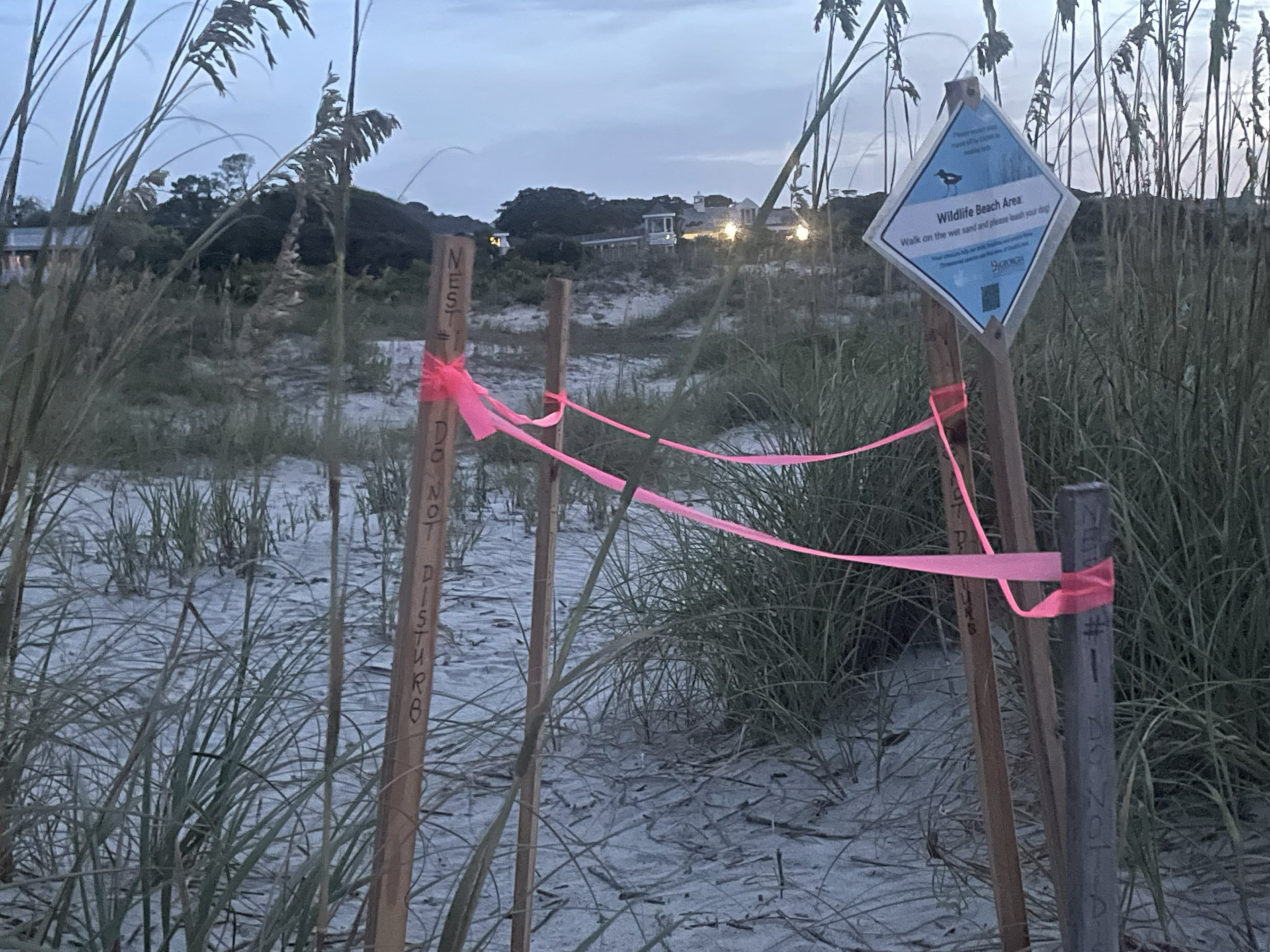
Why only one nest?
It’s no mystery why St. Simons, population 16,000, lags behind other Georgia coastal islands in nests. The island’s south end, home to all its beaches, is heavily developed. At the tip, an artificial beachhead made of boulders — not nest-friendly dunes — protects the Pier Village business district from erosion. Between the St. Simons Lighthouse at Pier Village’s edge and the beach’s edge at Gould’s Inlet, homes and hotels line the shore, bringing noise and light pollution.
Yet the island’s neighbors, Sea Island and Jekyll Island, are likewise people playgrounds but together have seen more than 200 nests this year. Even the locale most comparable to St. Simons in terms of population density and beachfront development, Tybee Island near Savannah, counted 15 nests as of July 15.
Where St. Simons differs from the rest, at least from a turtle nesting perspective, is in its lighting ordinance. Part of unincorporated Glynn County, St. Simons is subject to county codes, not municipal ordinances as at Tybee. Ridley of the St. Simons Island Sea Turtle Project calls the Glynn County code, last updated in 1984, “antiquated to the point of being virtually useless.”
The law doesn’t include standards practiced on Sea Island, Jekyll Island and Tybee, where regulations have been revised in the last decade to incorporate new knowledge and lighting technology.
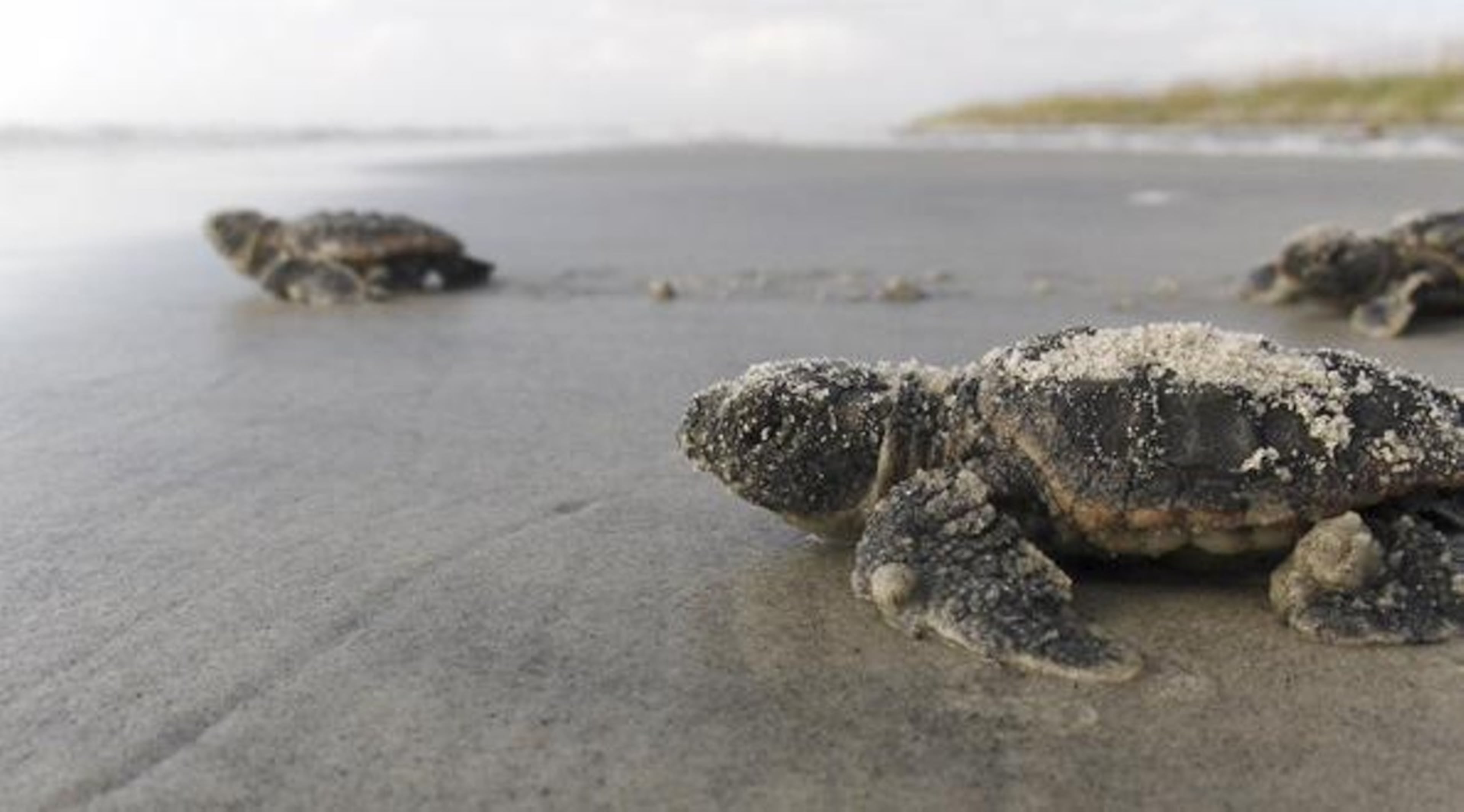
Glynn County government staff started work on lighting revisions seven years ago as part of a broader zoning law rewrite. The Glynn Commission has set a deadline of the year’s end to adopt the 270-page-long set of ordinances.
The county’s ordinance has received renewed attention in recent weeks stemming from lighting along I-95 at Exit 42, where a Buc-ee’s travel plaza opened on July 1. The Georgia Department of Transportation installed 23 high-mast lights at the interchange to improve visibility at night, and the poles extend above the tree line, making their glow visible along the popular turtle-nesting shores of Little St. Simons Island and Sapelo Island, both more than 12 miles away.
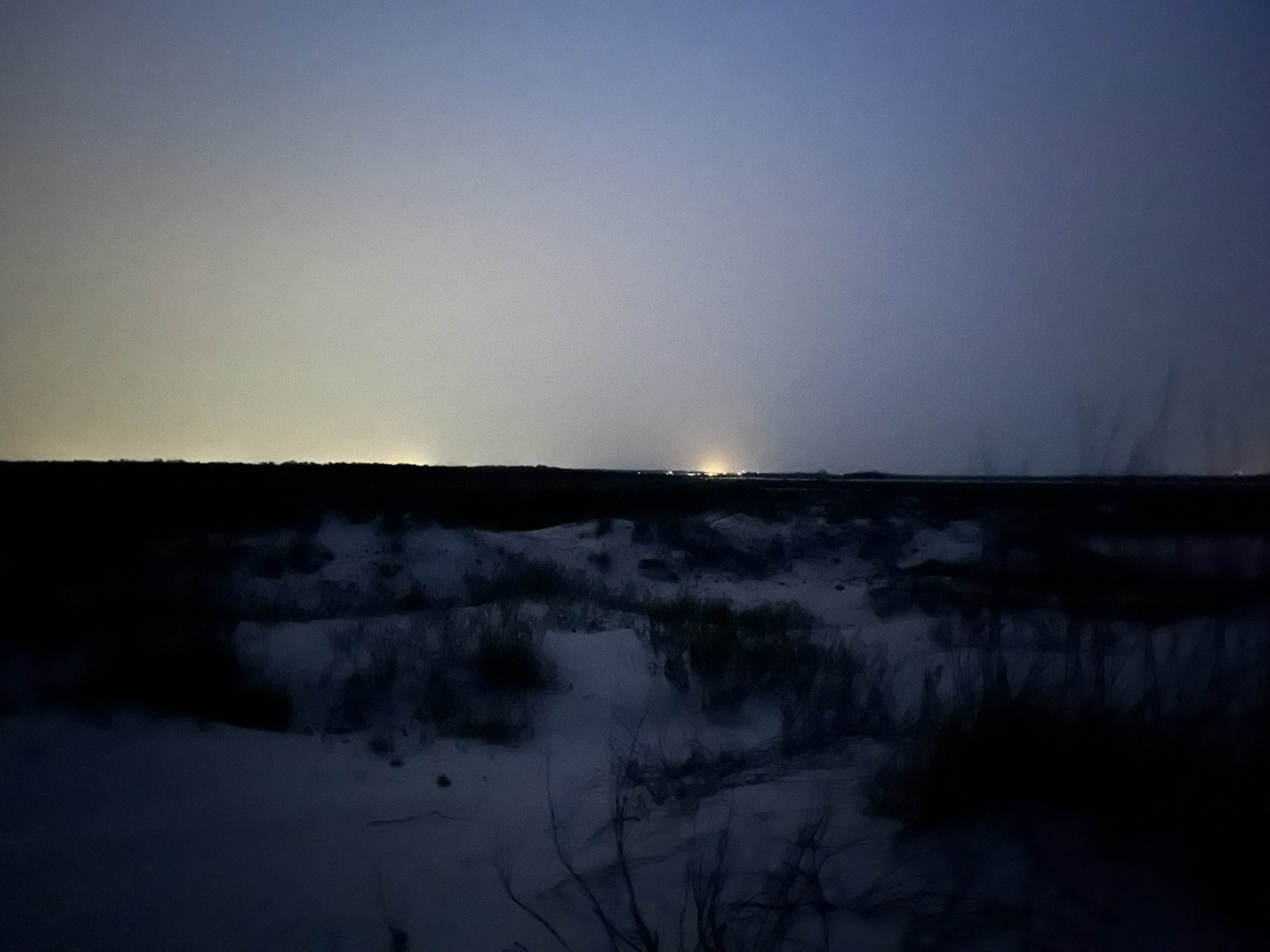
With Tuesday’s start of what is considered peak hatchling season, wildlife pros worry the high-mast lights at Exit 42 will disorient newborn turtles. These babies, smaller than the palm of one’s hand, find their way from the nest to the ocean by crawling toward the lowest and brightest horizon, which is typically cast by the stars and moon reflecting off the water’s surface.
Artificial light, particularly in white and other low-wavelength colors, imitates that reflected glow. Turtle-friendly lighting ordinances call for low-mounted, amber-colored and shielded lamps that won’t interfere with hatchlings’ instinctive navigation system or with mothers seeking to find suitable nesting spots. Just as baby turtles crawl toward the light, mothers look for dark beaches with little skyglow in the background to make their nests.
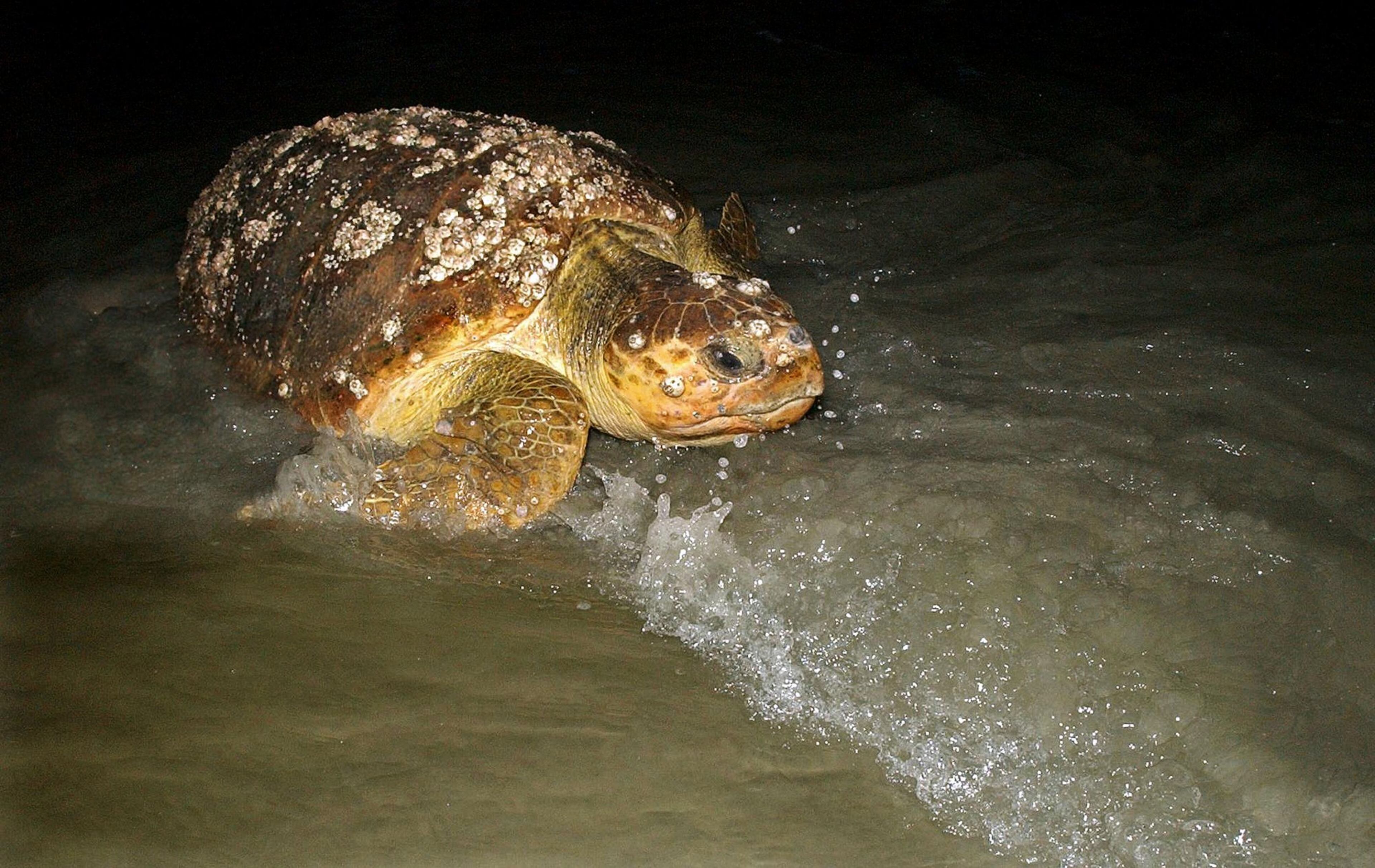
A female drops an average of 120 eggs with each nesting and can lay as many as six nests each season. Many return to the same beach on the same island each time — and each year.
The state’s senior turtle expert, wildlife biologist Mark Dodd with the Department of Natural Resources, notes the dramatic recovery in the loggerhead population this century, from a low of 400 nests statewide in 2004 to a high of 4,000 in 2022. He said improvement in low-yield nesting locales, such as St. Simons Island, is “something we can work through.
“We can make modest changes to our behavior to accommodate this iconic species that nests on our shores,” he said. “And still have a cool beach to go to.”
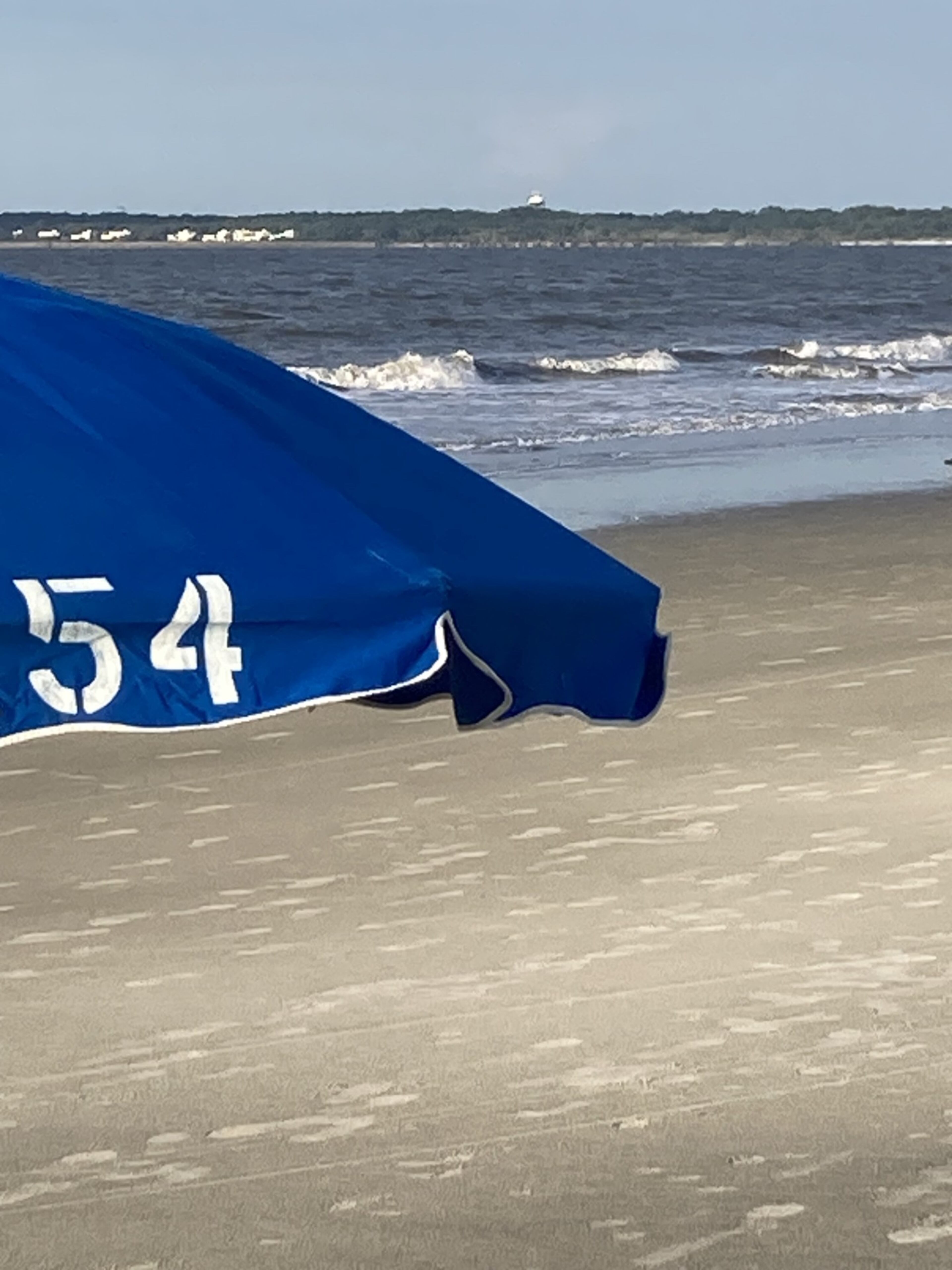
Where is there balance between man and turtle?
From St. Simons, you don’t have to look far for proof to support Dodd’s position. About a mile south across St. Simons Sound is all. Jekyll Island is within the geographical boundaries of Glynn County but is owned by the state and managed by a state authority with its own established zoning codes.
That entity’s mission is rooted in stewardship, and sea turtles are as much a part of Jekyll’s identity today as its standing as a winter retreat for the Morgans, Rockefellers and Vanderbilts during the Gilded Age. Jekyll is home to the Georgia Sea Turtle Center, an education and rehabilitation facility, and preserving the nesting grounds is a pillar of the island’s conservation program.
Ten of Jekyll’s 122 nests have already hatched, the first on July 2, and nightly patrols have yet to spot signs of a misoriented hatchling, according to conservation technician Will Hicks. Following the tracks left by the newborns as they leave the nest is part of the work done by Georgia Sea Turtle Center teams that monitor all 10 miles of Jekyll’s shoreline every night during nesting season.
The staffers and volunteers look for would-be egg layers as they come ashore, taking biological samples and tagging them with identifying markers. They also check nesting sites, marking them with stakes and installing screens to protect eggs from predators.
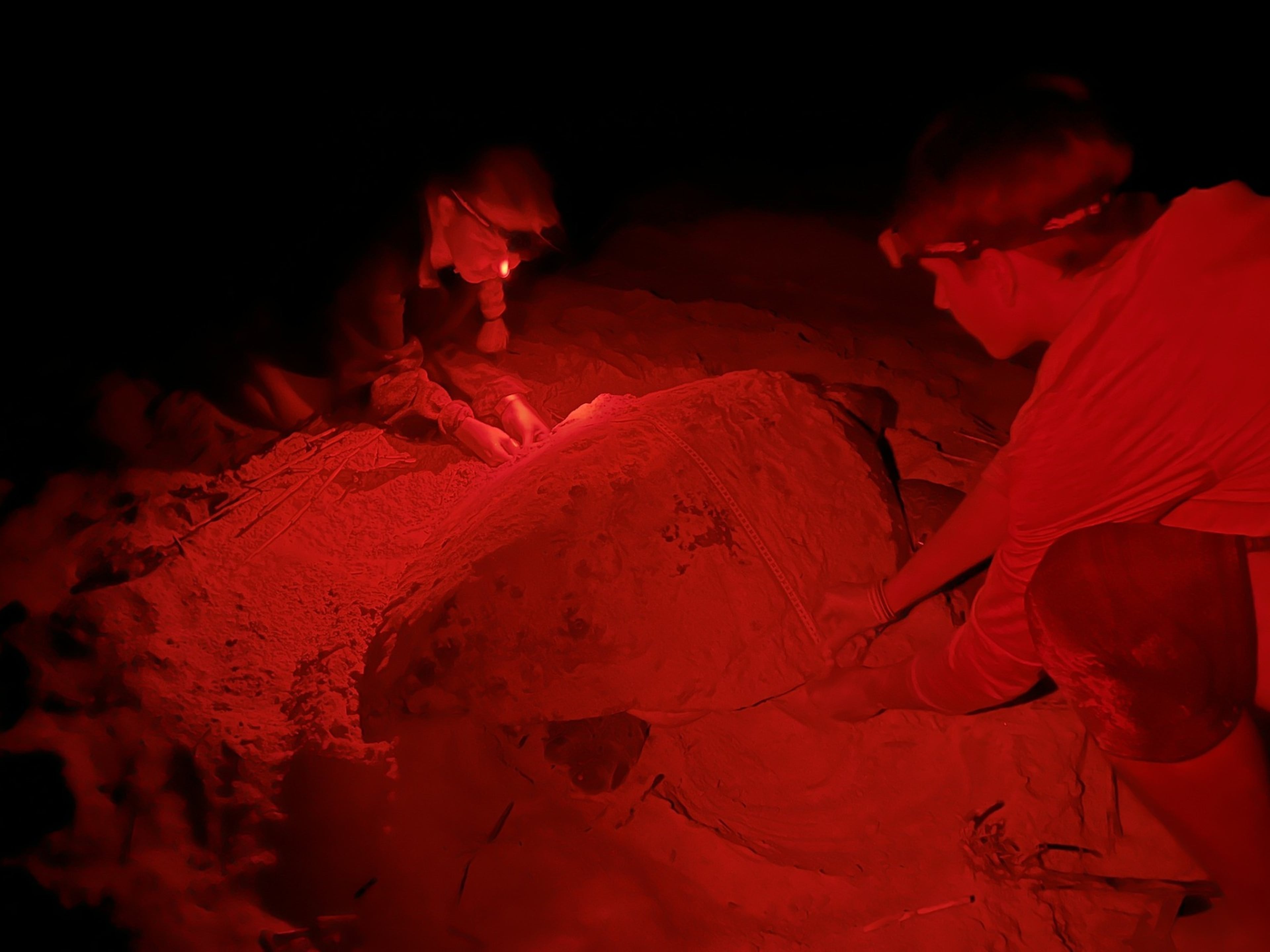
The watchdog duties extend to people, too. When they encounter flashlight-toting people on the beach, they offer them red-light pens instead and explain how white lights contribute to what are called false crawls, where females come ashore but return to the water without laying a nest.
They’re also on the lookout for bright lights coming from homes and businesses. They take cellphone photographs to follow up, typically with a visit with a homeowner or hotel maintenance director rather than a fine for violating the ordinance.
“Oftentimes, it’s somebody new who changed out a light bulb with one that’s not compliant or put a spotlight in their yard without thinking about it. Sometimes, a tree or a bush that was blocking the light falls down or is removed,” said Yank Moore, Jekyll’s conservation director. “Usually, a conversation is all it takes to resolve an issue because most are onboard with what we’re doing. Enforcement doesn’t have to start with a citation.”
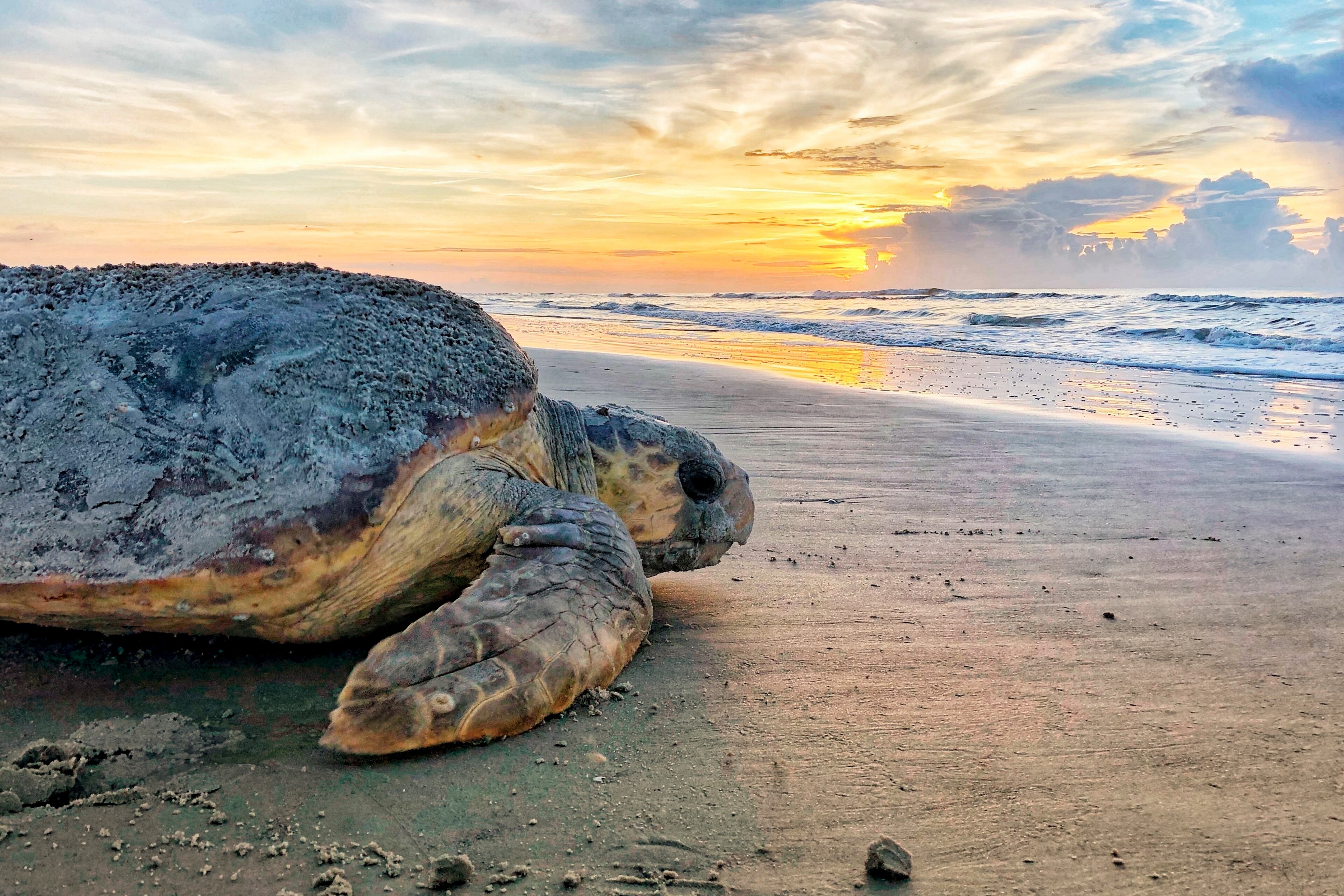
Is there (shrouded) light at end of Glynn County ordinance tunnel?
A stricter lighting ordinance does present a greater challenge on St. Simons than it has on Jekyll, experts admit.
Jekyll revised its regulations in tandem with a wave of hotel and other commercial property revitalization projects that started a decade ago, making it convenient for businesses to upgrade their lighting as part of the renovation work. And every house, hotel and other structure on Jekyll technically sits on state-owned land, with residents and businesses holding long-term leases in a quasi-partnership known as leasehold ownership.
Conversely, St. Simons’ beachfront is largely privately owned, and large-scale development along the shore dates back a century to when the causeway linking the island to Brunswick was built. The lone 2025 nest sits an easy turtle crawl from a public parking lot flanked by a large home and a three-story condominium complex.
The revised lighting ordinance has been through multiple drafts as county staff and conservation activists have sought to find a compromise. The latest version recently passed legal review and will be released to the public ahead of the Glynn Commission debate.
Assistant County Manager Danny Smith acknowledged the difficulty in crafting language “that does not negatively impact private property owners and provides meaningful sea turtle protections” but said the proposed changes strike that balance.
St. Simons’ turtle advocates are dubious — and out of patience. Ridley with the St. Simons Island Sea Turtle Project notes that even if an ordinance update were adopted today, it wouldn’t help this nesting season, and that implementation of the new rules by property owners will be a long process.
“To say this is moving at a turtle’s pace,” she said, “is an insult to the turtles.”


